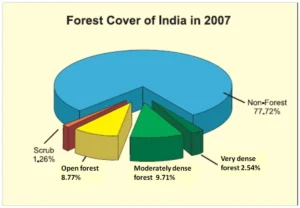
Introduction
National forest policies play a crucial role in the stewardship of forests, balancing ecological preservation with human needs. Over the decades, these policies have evolved significantly, reflecting changing priorities and scientific advancements. This article explores how modern regulations are shaping the future of forest management, focusing on key developments, current trends, and the implications for sustainable forest management.
Historical Overview of Forest Policies
Forest management policies have undergone substantial changes since the early 20th century. Initially, forest policies were primarily concerned with timber production and economic benefits. The establishment of national forests in the early 1900s, such as the U.S. National Forest System, marked a significant shift towards conserving forest lands for future generations.
In the latter half of the 20th century, the focus began to include environmental and recreational values. The 1964 Wilderness Act, for example, marked a landmark moment in U.S. forest policy, designating certain areas as wilderness to protect them from development.
Modern Forest Policies: Key Developments
- Sustainable Management Practices
Modern forest policies emphasize sustainability, aiming to balance ecological health with economic and recreational needs. The concept of sustainable forest management (SFM) integrates environmental, social, and economic objectives, ensuring that forests continue to provide ecological services and resources for future generations. Regulations now require forest management plans to include strategies for biodiversity conservation, water quality protection, and carbon sequestration.
- Climate Change Adaptation
Climate change has become a central concern in forest management. Policies now incorporate strategies for climate change adaptation and mitigation. This includes measures such as promoting forest resilience through diverse tree species, managing forests to enhance carbon storage, and addressing the impacts of pests and diseases exacerbated by changing climate conditions.
- Community Involvement

Modern forest management increasingly involves local communities in decision-making processes. Collaborative approaches, such as community-based forest management and co-management agreements, allow local stakeholders to participate in the stewardship of forest resources. This inclusion helps address local needs and fosters a sense of ownership and responsibility towards forest conservation.
- Technological Integration
Advances in technology have transformed forest management practices. Geographic Information Systems (GIS), remote sensing, and data analytics are now integral to monitoring forest health, planning management activities, and assessing the impact of policies. These technologies enable more precise and effective management strategies, enhancing the ability to respond to environmental changes and threats.
Current Trends in Forest Policies
- Emphasis on Biodiversity Conservation
Biodiversity conservation is a prominent trend in modern forest policies. Protecting species and habitats is crucial for maintaining ecosystem functions and resilience. Policies often include measures such as creating protected areas, implementing habitat restoration projects, and regulating activities that may threaten biodiversity.
- Integration of Indigenous Knowledge
There is a growing recognition of the value of indigenous knowledge and practices in forest management. Many policies now incorporate traditional ecological knowledge (TEK) and involve indigenous communities in management decisions. This integration helps ensure that forest management practices are culturally appropriate and environmentally effective.
- Focus on Ecosystem Services
Forest policies are increasingly focusing on the provision of ecosystem services, such as clean water, air purification, and soil stabilization. By recognizing and valuing these services, policies aim to ensure that forest management practices contribute to overall environmental health and human well-being.
Implications for the Future of Forest Management
- Enhanced Resilience
Modern regulations are designed to enhance the resilience of forests to various stressors, including climate change, pests, and diseases. By promoting diverse and healthy ecosystems, these policies aim to ensure that forests can adapt to changing conditions and continue to provide vital services.
- Increased Collaboration
The emphasis on community involvement and collaboration is likely to continue shaping the future of forest management. Engaging a wide range of stakeholders, including local communities, indigenous groups, and scientific experts, will be crucial for developing effective and equitable forest management strategies.
- Technological Innovations
Technological advancements will continue to play a significant role in forest management. Innovations in monitoring, data analysis, and decision-making tools will enhance the ability to manage forests more effectively and respond to emerging challenges.
- Policy Integration
Future forest policies are likely to integrate more with broader environmental and social policies. This holistic approach will help address complex issues such as climate change, biodiversity loss, and sustainable development in a more comprehensive manner.
Conclusion
The evolution of national forest policies reflects a growing understanding of the complex interplay between human activities and forest ecosystems. Modern regulations emphasize sustainability, climate change adaptation, community involvement, and technological integration, shaping the future of forest management. As these policies continue to evolve, they will play a critical role in ensuring that forests remain resilient and capable of providing essential ecological services for future generations.


